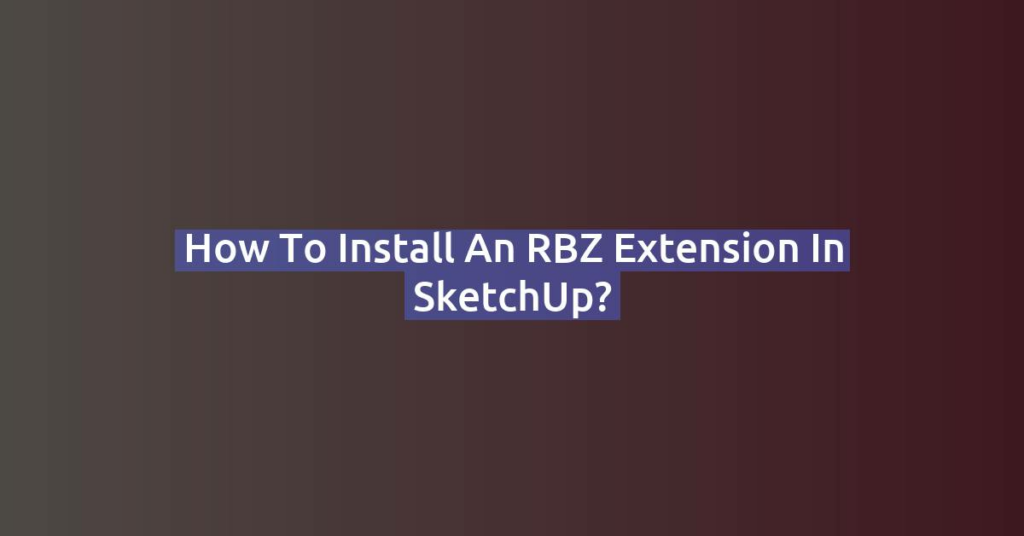As remote work and distributed teams become the norm, the need for effective collaboration tools in design projects has never been greater. SketchUp, a versatile 3D modeling software, offers a range of features and workflows that make it easier for teams to collaborate on complex projects, no matter where they are. In this post, we’ll explore how to use SketchUp for team projects, including cloud-based workflows, integrating with project management tools, and best practices for file sharing and version control.
1. Leveraging Cloud-Based Workflows
Cloud-based workflows are essential for modern collaborative design, allowing team members to access and work on projects from anywhere, at any time. Here’s how to use SketchUp effectively in a cloud-based environment:
SketchUp for Web
- Access from Anywhere: SketchUp for Web is the browser-based version of SketchUp, which allows team members to access and edit models without the need for local installations. This is particularly useful for quick edits, reviews, or when working from different devices.
- Real-Time Collaboration: Although SketchUp for Web doesn’t support real-time simultaneous editing, it does allow multiple users to access the same model sequentially, making it easy to share updates quickly.
Trimble Connect Integration
- Centralized Project Management: Trimble Connect is a cloud-based collaboration platform integrated with SketchUp. It allows teams to store, share, and manage 3D models, 2D drawings, and other project files in a centralized location. Team members can access the latest versions of models and other documents, reducing the risk of working on outdated files.
- Version Control: Trimble Connect automatically tracks changes and versions of your SketchUp models, so you can easily revert to previous versions if needed. This is crucial for maintaining the integrity of the project as multiple team members contribute to the design.
- Task Assignment and Tracking: Within Trimble Connect, you can assign tasks, set deadlines, and track the progress of different aspects of your project. This ensures that everyone is on the same page and knows what needs to be done.
Google Drive and Dropbox
- File Sharing and Backup: Google Drive and Dropbox are popular cloud storage services that can be used to store and share SketchUp files. Both platforms offer file version history, which allows you to recover previous versions if needed.
- Collaborative Editing: While these platforms don’t offer real-time collaboration in the same way as Trimble Connect, they are convenient for file sharing, particularly for smaller teams or when Trimble Connect is not an option.
2. Integrating SketchUp with Project Management Tools
Project management tools are critical for keeping team projects organized, especially when working remotely. Here’s how to integrate SketchUp with popular project management platforms:
Trello
- Visual Task Management: Trello is a visual project management tool that works well with SketchUp for organizing tasks and tracking progress. You can create boards for different aspects of the project, such as design phases, client feedback, or construction documentation.
- File Attachments: Attach SketchUp models, screenshots, or Trimble Connect links to Trello cards to keep all relevant information in one place. This makes it easy for team members to access the latest versions of models directly from Trello.
Asana
- Task Assignment and Workflow Management: Asana allows for more detailed task management, including setting up dependencies and timelines. You can create tasks for specific design elements, assign them to team members, and track progress.
- Integration with Cloud Storage: Asana integrates with Google Drive, Dropbox, and other cloud storage solutions, allowing you to link SketchUp files directly to tasks. This ensures that team members have quick access to the latest models while staying organized.
Slack
- Real-Time Communication: Slack is a real-time messaging platform that enhances communication among team members. Integrating Slack with SketchUp allows you to share files, get instant feedback, and discuss changes without leaving the platform.
- SketchUp Viewer Bot: Use a SketchUp Viewer bot in Slack to preview models directly within your Slack channels. This is particularly useful for quick reviews or getting team input without needing to open SketchUp.
3. Best Practices for File Sharing and Version Control
Effective file sharing and version control are vital for ensuring that all team members are working on the correct version of a model. Here are some best practices:
Consistent File Naming Conventions
- Version Numbers: Always include version numbers in your file names (e.g., ProjectName_v01.skp, ProjectName_v02.skp). This helps avoid confusion and ensures that everyone is aware of the most recent version.
- Date Stamps: Adding a date to the file name (e.g., ProjectName_2024-08-30.skp) can also help keep track of the progress and ensure that you’re always working with the latest file.
Centralized File Storage
- Use Shared Folders: Whether you’re using Trimble Connect, Google Drive, or Dropbox, ensure that all files are stored in a centralized, shared folder accessible to all team members. This minimizes the risk of version conflicts and ensures that everyone has access to the latest files.
- Access Permissions: Set appropriate access permissions to avoid accidental deletions or overwrites. For example, you might allow some team members to view files but restrict editing rights to a smaller group.
Regular Backups
- Automatic Backups: Ensure that your cloud storage platform or Trimble Connect is set to automatically back up your SketchUp files. Regular backups protect against data loss and make it easier to recover earlier versions if necessary.
- Manual Backup Process: Establish a routine for manually backing up your files, especially before major revisions or when multiple team members are making significant changes. Store these backups in a secure location separate from your primary working files.
4. Collaborative Workflow Tips
Working as a team on SketchUp projects can be challenging, but following these tips can help streamline the process:
Clear Communication
- Daily Stand-Ups: If your team is working remotely, consider holding daily stand-up meetings via video conference to discuss progress, challenges, and next steps. This keeps everyone aligned and helps resolve issues quickly.
- Feedback Loops: Establish clear channels for feedback, whether through comments in Trimble Connect, Slack messages, or project management tools. Timely feedback ensures that changes can be made quickly and effectively.
Model Organization
- Use Layers and Groups: Organize your SketchUp model using layers and groups. This not only helps in managing large models but also makes it easier for different team members to work on specific parts of the model without interfering with others’ work.
- Component Library: Create a shared component library for your team. This ensures consistency in the use of materials, furniture, and other design elements across the project.
Conclusion
Collaborative design with SketchUp can be highly effective with the right tools and practices in place. By leveraging cloud-based workflows, integrating with project management tools, and following best practices for file sharing and version control, your team can work together smoothly and efficiently, regardless of location. As remote work continues to grow, mastering these collaborative techniques will be crucial for delivering successful projects.
Ready to optimize your team’s SketchUp workflow? Start implementing these strategies today and see how collaboration can enhance your design process.



